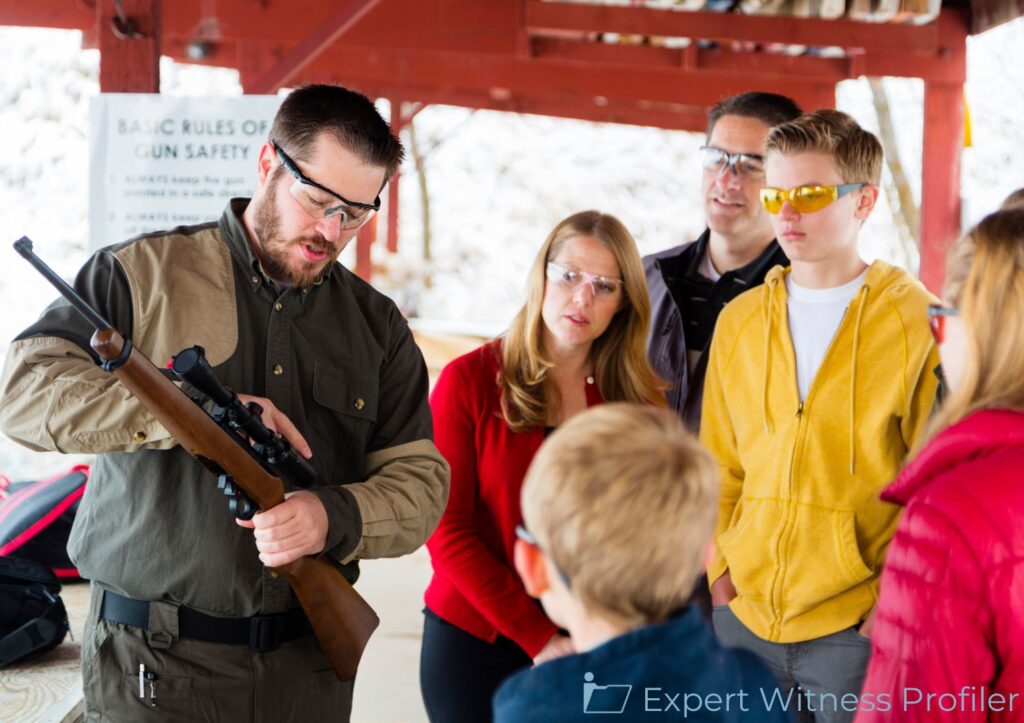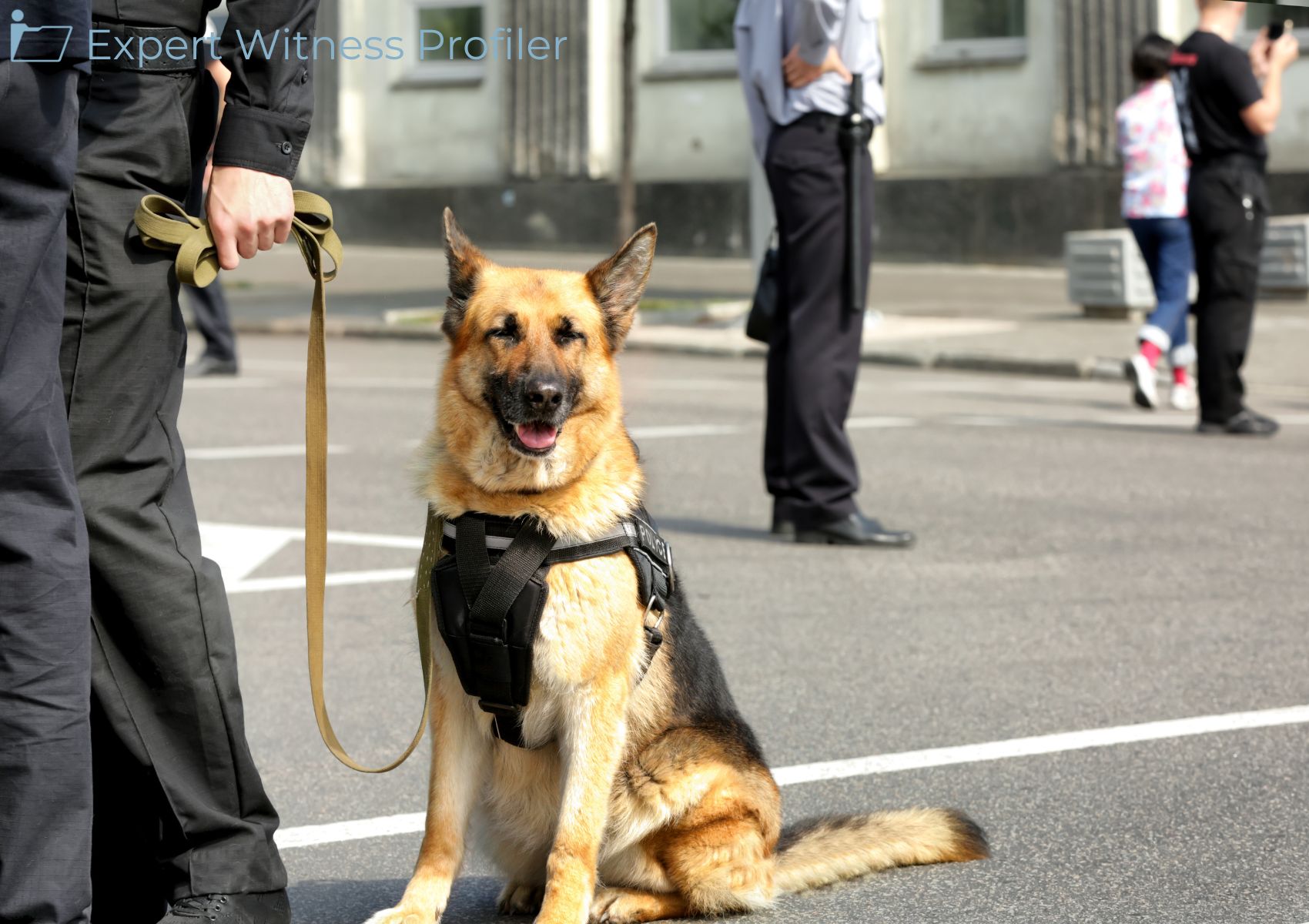Court Refuses to Bar Expert Witnesses from Opining on Firearms Regulation
Posted on May 15, 2024 by Expert Witness Profiler
A district judge in Vermont refused to exclude the testimony assessing the impact of gun laws presented by the State’s expert witnesses.
Plaintiffs, corporate entities affiliated with gun ownership and several Vermont residents, filed this action against Defendants, high-level Vermont state officials. Plaintiffs allege that 13 V.S.A. § 4021, which prohibits possession and sale of “large capacity ammunition feeding device[s],” and 13 V.S.A. § 4019a, which prohibits transfer of a firearm without a background check or expiration of a waiting period, are unconstitutional under the Second Amendment. On December 20, 2023, the Plaintiffs filed a motion for a preliminary injunction against the enforcement of the Vermont laws. A hearing on that motion is set for May 23, 2024. In anticipation of that hearing, Plaintiffs filed a motion to bar the State’s expert witnesses from testifying.

Economics Expert Witness
Lucy Allen is a Senior Managing Director of NERA Economic Consulting (“NERA”), a member of NERA’s Securities and Finance Practice and Chair of NERA’s Product Liability and Mass Torts Practice. She has analyzed issues related to mergers, ERISA claims, market microstructure, and alleged market manipulation and insider trading, including on complex financial instruments such as credit derivatives, futures, and swaps. She holds a bachelor’s degree from Stanford and three graduate degrees from Yale (M.B.A., M.A., and M.Phil.)
Language & Linguistics Expert Witness
Dennis Baron is a Professor Emeritus and Research Professor at the University of Illinois, serving in both the English and Linguistics Departments. He holds a Ph.D. from the University of Michigan and did his dissertation on “historical aspects of the English language.” In addition to his scholarly publications, he writes frequently on language and technology issues in the news, and his essays have appeared in the New York Times, the Washington Post, the Chicago Tribune, and many other papers.
Criminal Law Expert Witness
John Donohue is a law professor at Stanford Law School. He holds a law degree from Harvard and a Ph.D. in economics from Yale. He teaches a course on empirical law and economics issues involving crime and criminal justice and has “published extensively” on the impact of gun regulation (or the lack thereof) on crime.
History Expert Witness
Randolph Roth is a professor of history and sociology at The Ohio State University. He has a B.A. in history from Stanford and Ph.D. in history from Yale. He teaches and researches with a primary focus on “criminology and the history of crime.”
Political Science Expert Witness
Robert Spitzer is a professor of political science at the State University of New York at Cortland. He is currently teaching at William and Mary Law School. He has a Ph.D. in government from Cornell and has written extensively on American politics and gun policy. Professor Spitzer’s “expertise includes the history of gun laws, gun policy in American politics, and related historical, legal, political, and criminological issues.”
Discussion by the Court
Lucy Allen
The State sought to introduce Allen’s testimony on “the number of rounds of ammunition fired by individuals using a gun in real-life self-defense” and “the outcomes when large-capacity magazines are used in public mass shootings, including the associated number of casualties.”
Allen analyzed more than 736 incidents in the NRA Armed Citizen database and 200 news stories from a random sample of 4,800 detailing incidents of self-defense and found that “it is extremely rare for a person . . . to fire more than 10 rounds [when using a firearm in self-defense].” Her research revealed only two incidents “where more than 10 rounds were used.”
Allen also analyzed roughly 200 mass shootings from four different sources between 1982 and 2022 and found that “(1) large-capacity magazines are often used in mass shootings; (2) both injuries and fatalities were higher in mass shootings that involved large-capacity magazines than in other mass shootings; (3) it is common for offenders to fire more than 10 rounds when using a large-capacity magazine in mass shootings; and (4) the majority of guns used in mass shootings were obtained legally.”
The Court held that her expert testimony made a “fact that is of consequence to the determination of the action” – namely, how LCMs are used – “more or less probable than it would be without” her testimony. Moreover, the underlying sources of Allen’s analysis – NRA data and news reports – are the kind that an expert would “reasonably rely” upon in forming an opinion on the subject.
Dennis Baron
Baron would testify that “during the Founding Era and the Reconstruction Era, ‘arms’ was used as a general term for weapons . . . but did not include ammunition [or] ammunition containers.” This is based on analysis of broader phrases such as “arms and accoutrements” which, in Baron’s opinion, were used to specify items (accoutrements) other than firearms themselves. Baron would also testify that he has found “no lexical evidence that either repeater firearms or repeater air guns were used as military weapons in England or America in the Founding Era, or that they were used as weapons of personal self-defense at that time.”
Baron’s analysis of the historical understanding of the term “arms” is relevant to determining whether the government’s regulation covers conduct protected by the Second Amendment. Resolution of that issue requires evaluating whether the restricted items – LCMs, in this case – qualify as “arms” under the Second Amendment. The Court held that Baron’s research is relevant to determining whether the regulation covers protected conduct requires textual analysis.
Plaintiffs stated that there is no way to use a firearm without ammunition, rendering magazines integral to “arms” within the meaning of the Second Amendment, but the fact that having some magazine may be crucial to keeping and using a firearm says nothing about whether governments may impose outer limits on those magazines, which is the question before the Court. Baron’s understanding of the historical context of these terms is relevant to this determination.
John Donohue
Donohue would testify that “restrictions on the size of large-capacity magazines . . . can be expected to reduce deaths and injury from gun violence.” He would also testify that “substantial empirical evidence illustrates that waiting periods prior to the purchase of weapons . . . will reduce suicides – particularly among young adults – and would be expected to reduce the risk of . . . enraged individuals buying firearms on the way to commit mass violence.” Finally, Donohue reported that restrictions on LCMs generally have “little or no effect on the ability of individuals to possess weapons for self-defense,” but “should have” a mitigating effect upon mass violence.
Donohue stated that “the problem of public mass shootings in the United States is a serious and worsening national problem.” He added that governments “began responding to this growing menace with . . . restrictions on the type of weaponry that facilitated mass shootings.”
Donohue’s declaration goes directly to the question of whether mass shootings are a social problem addressed by previous generations, or whether they are a novel challenge requiring legislative innovation.
This is a substantial consideration undergirding the historical analysis pursuant to Bruen and is therefore relevant to the case. The Court held that Donohue’s causal claims are not solely applicable to interest balancing frameworks. Empirical research on gun regulation and violence rates is relevant to the question of whether societal problems are new, and whether they correspondingly mandate new solutions.
Plaintiffs correctly asserted that “reasoning by analogy” from a contemporary firearm regulation to historical regulation is a “commonplace task” for a lawyer or judge. But reasoning by analogy requires an analog. That is what Donohue’s testimony purports to provide.
Randolph Roth
Randolph Roth would testify that increased American homicide rates correlate with “political instability, a loss of trust in government and political leaders, a loss of fellow feeling among citizens, and a lack of faith in the justice of the social hierarchy.” He would also testify that “the availability of guns,” especially “rapid-fire semiautomatic weapons and extended magazines in the late twentieth century, have pushed the homicide rate in the United States well beyond what it would otherwise have been.” Roth also wished to address colonial firearm restrictions and the gradual development of firearm regulations.
The Court held that Roth’s declaration demonstrated expertise in the history of violent crime and the relationship between “extended magazines” and the American homicide rate.
Plaintiffs asserted that Roth’s testimony focused primarily on the rise in violence stemming from “breechloading” guns, and that his declaration failed to evince a “dramatic technological change” or “unprecedented societal concern.” The Court disagreed because Roth’s declaration traced homicide and mass killing rates as compared to advancing gun technology, and concluded that the advent of submachine guns led to increased threats to “public safety” and governmental regulation.
Robert Spitzer
Spitzer’s declaration stated that “[t]he current controversy surrounding legislative efforts to restrict large capacity magazines (LCMs) would seem to be a purely contemporary matter, responding to the modern phenomenon of mass shootings.” He would testify to the prevalence of assault weapon and LCM restrictions around the country. He would also state that “restrictions on LCMs are historically grounded.”
With regard to waiting periods, Spitzer would testify that three features of the contemporary gun purchasing landscape explain the rise of gun purchase waiting periods. First, the rise of “mass production techniques” and “[r]paid, convenient, gun sales processes” are relatively new. Second, “no organized system of gun background checking could feasibly exist until the modern era.” And finally, “homicide rates in the colonies and early Federal era were generally low, and when homicides occurred, guns were seldom used because of the time involved in loading them, their unreliability, and (especially for pistols) their inaccuracy.” Additionally, Spitzer would testify that there are “similar, analogous historical gun laws” notwithstanding the lack of statutory waiting periods, such as “laws regulating weapons and intoxication, and weapons licensing laws.”
The Court held that Spitzer’s proposed testimony was relevant considering analysis of the history of political response to gun-related problems is central to the Court’s mandate in this case.
Rule 403 Objection
Plaintiffs stated that the Court should exclude the State’s expert testimony as “more prejudicial than probative” under Federal Rule of Evidence 403. Plaintiffs have not supported this contention with any detail, so that request is denied. Additionally, because the Court concludes that the State’s experts are admissible, it need not hold a Daubert hearing.
Held
The Court denied the Plaintiffs’ motion to exclude the State’s expert witnesses Lucy Allen, Dennis Baron, John Donohue, Randolph Roth, Robert Spitzer.
Key Takeaways:
- The Court refrained from excluding Allen’s testimony on hearsay grounds because if expert testimony drawing statistical conclusions based upon database records were to be excluded as hearsay, nearly all expert testimony would be excluded.
- Baron’s analysis of the historical understanding of the term “arms” is relevant considering the fact that having some magazine may be crucial to keeping and using a firearm says nothing about whether governments may impose outer limits on those magazines, which is the question before the Court.
- Analysis of the history of political response to gun-related problems is central to the Court’s mandate in this case. Spitzer’s testimony deals with the history of American gun regulation, which is a verifiable issue of fact material to this litigation.
- The risk of prejudice from overly broad testimony is substantially reduced because the Court is the finder of fact at this stage of litigation.
Case Details:
| Case Caption: | Vermont Federation Of Sportsmen’s Clubs Et Al V. Birmingham Et Al |
| Docket Number: | 2:23cv710 |
| Court Name: | United States District Court, Vermont |
| Date: | May 14, 2024 |





